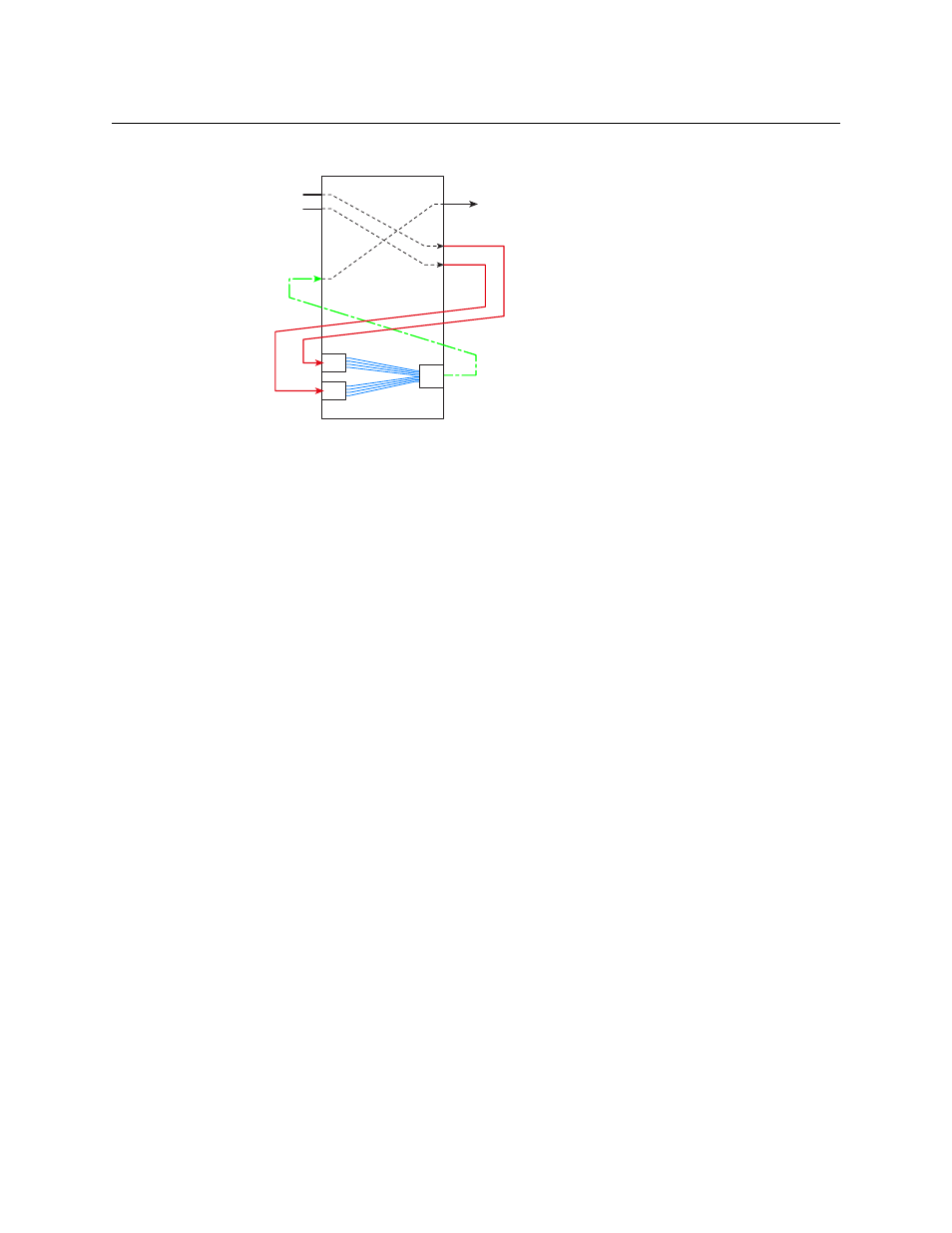Channels command – Grass Valley DHP v.1.1 User Manual
Page 25

17
DHP
Reference Manual
An example:
This illustration shows
a One re-embedder path (green, dashed).
Each re-embedder pair describes a hybrid embedder card “tied to” a standard input card.
The single path in the example requires two commands in the file:
OUT 122
1
23
Port 122 (hybrid out) is tied to port 23 (std in).
IN
23
1
122
“1” means a re-embedder connection.
b Two disembedder paths (red, solid).
Each disembedder pair describes a standard output port “tied to” a hybrid disembedder
input card. This example has two disembedder paths, requiring 4 commands in the file:
OUT 40
2
86
Port 40 (std out) is tied to port 86 (hybrid in).
IN
86
2
40
“2” means a disembedder connection.
OUT 41
2
87
Port 41 (std out) is tied to port 87 (hybrid in).
IN
87
2
41
In general, there will be more disembedder paths than re-embedder paths.
The order in which you write the commands does not matter as long as the pairs
exist. You could group all the
OUT
commands together and all the
IN
commands
together if it suits your purpose.
Note that if DHP does not recognize the content of a line in the file, the line is treated
as a comment. You are free to intersperse comments throughout the configuration
file. We suggest you use comments that start with a semicolon (;).
CHANNELS Command
The syntax for the “Channels” command is
CHANNELS ‹number› where
1
< ‹number› < 16
Use this command at the beginning of the ‘HybridPorts’ file to specify the maximum number of
audio channels embedded in the signals your router receives.
Caution: embedder outputs always embed 16 audio channels. If your input signal has fewer
than 16 channels, you will almost certainly want to provide generated silence for the remaining
channels at output.
Std In
Std Out
Std In
Std Out
Std Out
Std In
DIS
DIS
EMB
port 40
port 41
port 122
port 86
port 87
port 23
